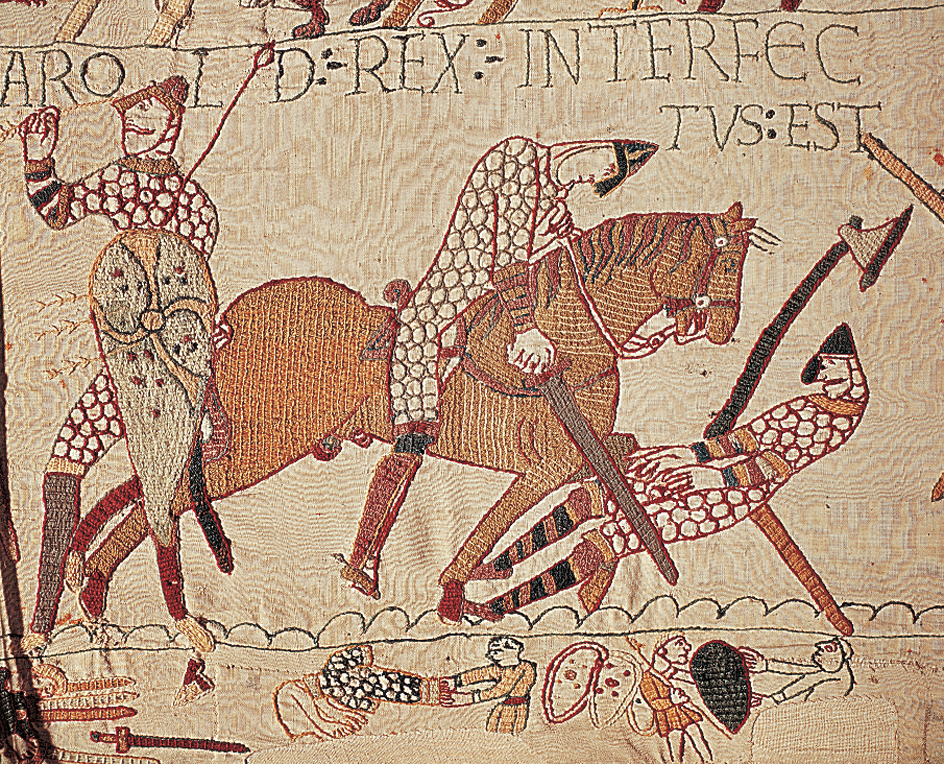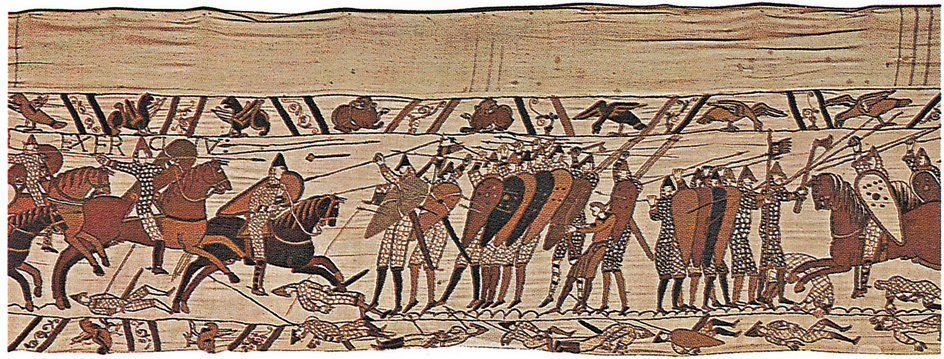Bayeux << bay YOO or by YUH, >> Tapestry, is a work of embroidery that tells, in pictures, the story of the Norman Conquest. In the Norman Conquest, William, Duke of Normandy, invaded and conquered England in A.D. 1066 by defeating the forces of the English king Harold II. Normandy is a region in northern France. William later became known as William the Conqueror.

Historians believe the Bayeux Tapestry was stitched in England during the late 1000’s. Its creation was probably ordered by William’s half-brother Odo, who was bishop of Bayeux, a town in Normandy.
The Bayeux Tapestry is not really a tapestry, in which designs are woven into fabric. Rather, it is a work of crewel, a form of embroidery in which designs are made by stitching woolen threads on a background of plain cloth. In the Bayeux Tapestry, threads in shades of red, yellow, green, and blue are stitched on linen.
The Bayeux Tapestry has 73 scenes. In its present condition, it is about 20 inches (50 centimeters) high and about 230 feet (70 meters) long. But it is shorter than it once was because one end is missing. The work was intended as a wallhanging. It is kept in the Bayeux Tapestry Museum in Bayeux, France.

